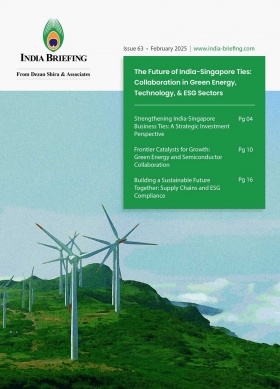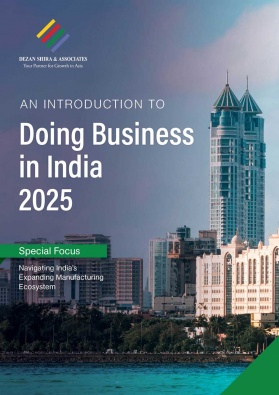India’s 2025 Maritime Push with US$20 Billion Investment and Global Ties
India is accelerating its US$20 billion maritime investment strategy, unveiled during Union Minister Sarbananda Sonowal’s five-day visit to Norway and Denmark in June 2025. This included high-level ministerial meetings with Norway, Denmark, and Japan, focusing on global maritime collaboration, green hydrogen hubs, Arctic shipping, and shipbuilding.
India has set out a US$20 billion investment roadmap in 2025 aimed at modernizing its shipping infrastructure, supporting shipbuilding, digitizing port operations, and moving toward cleaner fuel alternatives. Indian Union Minister of Ports, Shipping, and Waterways Sarbananda Sonowal, during his five-day visit to Norway and Denmark in June 2025, announced India’s intent to restructure the maritime sector for long-term sustainability and private investments.
A major focus of the visit was the development of three major Green Hydrogen Hub Ports, Kandla, Paradip, and Tuticorin, which are designed to become anchors of low-emission maritime operations. India also reaffirmed its commitment to routes such as the India-Middle East-Europe Economic Corridor (IMEEC), the Eastern Maritime Corridor (EMC) with Russia’s Far East, and the International North–South Transport Corridor (INSTC) connecting India to Central Asia and Europe via Iran and the Caucasus.
ALSO READ: Vizhinjam International Seaport: India’s Maritime Leap
India and Norway pledge investments in shipping and navigation
India’s participation in the Nor-Shipping Conference 2025 in Oslo has accelerated its maritime modernization agenda. A key development during the Norway visit involved India’s collaboration with Norwegian technology firms to explore Arctic maritime routes. This collaboration includes the design and development of ice-class vessels for year-round polar navigation and joint research into Arctic shipping operations.
During meetings with Norway’s Transport Minister Jon-Ivar and Fisheries Minister Marianne Sivertsen, Indian officials discussed ferry electrification systems and agreed to conduct joint feasibility studies for the Northern Sea Route (NSR), aiming to expand India’s capabilities in Arctic navigation.
Indian public and private shipbuilders also signed several Memorandums of Understanding (MoUs) with international partners at the conference. India’s state-run defence manufacturer, Garden Reach Shipbuilders & Engineers Ltd. (GRSE), signed an agreement with Germany’s Carsten Rehder to supply four 7,500 deadweight tonnage (DWT) multipurpose vessels and another with UAE-based Aries Marine to support offshore platform construction. These MoUs reflect India’s emerging role as a competitive manufacturing hub for both defense and commercial maritime sectors.
GRSE also partnered with Norway-based Kongsberg Maritime AS to co-design and build India’s first Polar Research Vessel (PRV). This vessel will support India’s Arctic and Antarctic research missions through the National Centre for Polar and Ocean Research (NCPOR). Additionally, Larsen & Toubro Ltd. (L&T) signed an MoU with Oslo-based DNV to collaborate on port infrastructure, smart energy systems, shipbuilding, cybersecurity, and digital maritime platforms.
Japan’s role in shipbuilding and skill development in India
In a recent interaction with Japan’s Vice Minister Terada Yoshimichi, India has highlighted its strategic focus on developing smart ports, adopting AI-driven navigation technologies, and enhancing seafarer training. India has reportedly invited leading Japanese shipbuilders, including Imabari and Mitsubishi, to invest in new shipbuilding facilities—particularly in Andhra Pradesh—to support the country’s growing demand for green and hybrid vessels.
The India–Japan partnership also spans maritime heritage and security. Both countries are collaborating under multilateral frameworks such as the India–Japan–Australia Supply Chain Resilience Initiative (SCRI) to develop port-based manufacturing and integrated logistics ecosystems.
India continues to invest in maritime human capital to realize its long-term sectoral goals. Sonowal noted that national training programs have already prepared over 154,000 seafarers. Recent MoUs with Japan and Denmark aim to expand training initiatives focused on advanced vessel operations, maritime safety, and the management of renewable marine fuels.
Indo-Danish green maritime MoUs for Center of Excellence signed
India and Denmark have deepened their green maritime cooperation by launching a joint Center of Excellence in Green Shipping on June 6, 2025. This initiative, governed under their 2024 bilateral MoU, brings together institutions like the National Centre of Excellence for Green Port and Shipping (NCoEGPS) in India and the Maersk McKinney Moller Center for Zero Carbon Shipping. The partnership aims to conduct feasibility studies for green corridors at Indian ports and to co-develop green fuel supply chains.
These developments are expected to attract global investors looking to fund decarbonization efforts in developing maritime economies. Moreover, this model of institutional partnership sets a precedent for future collaborations in shipping innovation, maritime safety, and emission control technologies.
To extend its maritime influence globally, India launched Bharat Global Ports (BGP) and Bharat Container Shipping Line (BCSL) in February 2025. BGP, formed by India Ports Global Ltd. (IPGL), Sagarmala Development Company Ltd. (SDCL), and Indian Port Rail & Ropeway Corporation Ltd. (IPRCL).
BCSL, under the aegis of Shipping Corporation of India (SCI), will manage a new fleet of large container vessels to address India’s less than 30 percent containerization rate. Containerization means using standardized containers to pack and ship various products. A low containerization rate suggests that a large portion of India’s goods are still being shipped in loose form. BCSL’s new ships will be acquired through lease or purchase agreements and integrated into India’s broader Sagarmala initiative.
Sustainable maritime development and green shipping
The central government has also emphasized a multi-pronged approach to sustainable shipping, including policy instruments like the Shipbuilding Financial Assistance Policy (SBFAP 2.0), which offers up to 30 percent assistance for hydrogen, ammonia, methanol, or electric-powered vessels. This framework is coupled with programs like the Green Tug Transition Program to encourage adoption of energy-efficient vessels in port operations.
In March 2025, India launched a 1-MW electrolyzer-based green hydrogen plant at Deendayal Port in Kandla, Gujarat, with a long-term plan to scale it to 10 MW. Similar projects are being assessed for major ports such as VO Chidambaranar, Tamil Nadu. These developments support both energy diversification and alignment with International Maritime Organization (IMO) decarbonization targets, though infrastructure gaps, cost barriers, and fuel pricing remain important variables for investors to watch.
To support these ambitions, India is investing in port digitalization and logistics transparency. The Union Shipping Ministry has rolled out digital systems like the One Nation-One Port Process (ONOP) for standardized port operations, the National Logistics Portal (Marine) for unified digital documentation and cargo tracking, and the MAITRI Virtual Trade Corridor, designed to virtually integrate ports, customs, and trade hubs to expedite cross-border trade.
CLICK HERE: India’s Shipping Industry: Investment Opportunities for Foreign Investors
Way ahead
By integrating green hydrogen hubs, digitized ports, and international collaboration, the country is reshaping its maritime identity. For global investors, this presents a rare combination of emerging market growth and sustainability-driven investment opportunities.
With regulatory stability, supportive financial mechanisms, and rising trade volumes, India’s maritime sector is well-positioned to become a cornerstone of global commerce and climate-resilient infrastructure. The current momentum signals not just a policy commitment but a structural shift that will define maritime growth in the decades to come.
About Us
India Briefing is one of five regional publications under the Asia Briefing brand. It is supported by Dezan Shira & Associates, a pan-Asia, multi-disciplinary professional services firm that assists foreign investors throughout Asia, including through offices in Delhi, Mumbai, and Bengaluru in India. Dezan Shira & Associates also maintains offices or has alliance partners assisting foreign investors in China, Hong Kong SAR, Vietnam, Indonesia, Singapore, Malaysia, Mongolia, Dubai (UAE), Japan, South Korea, Nepal, The Philippines, Sri Lanka, Thailand, Italy, Germany, Bangladesh, Australia, United States, and United Kingdom and Ireland.
For a complimentary subscription to India Briefing’s content products, please click here. For support with establishing a business in India or for assistance in analyzing and entering markets, please contact the firm at india@dezshira.com or visit our website at www.dezshira.com.
- Previous Article India Schedules First Digital Population Census for 2027: What You Need to Know
- Next Article Karnataka Notifies Peenya as Special Investment Region to Boost Industrial Growth








